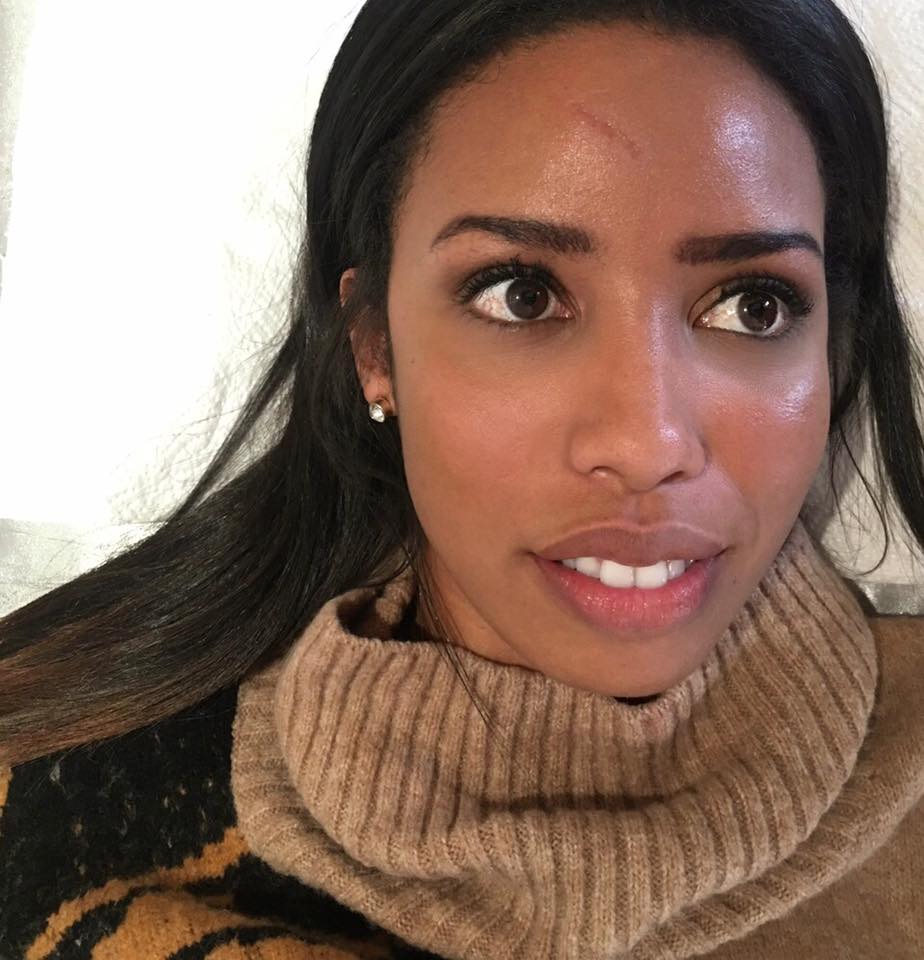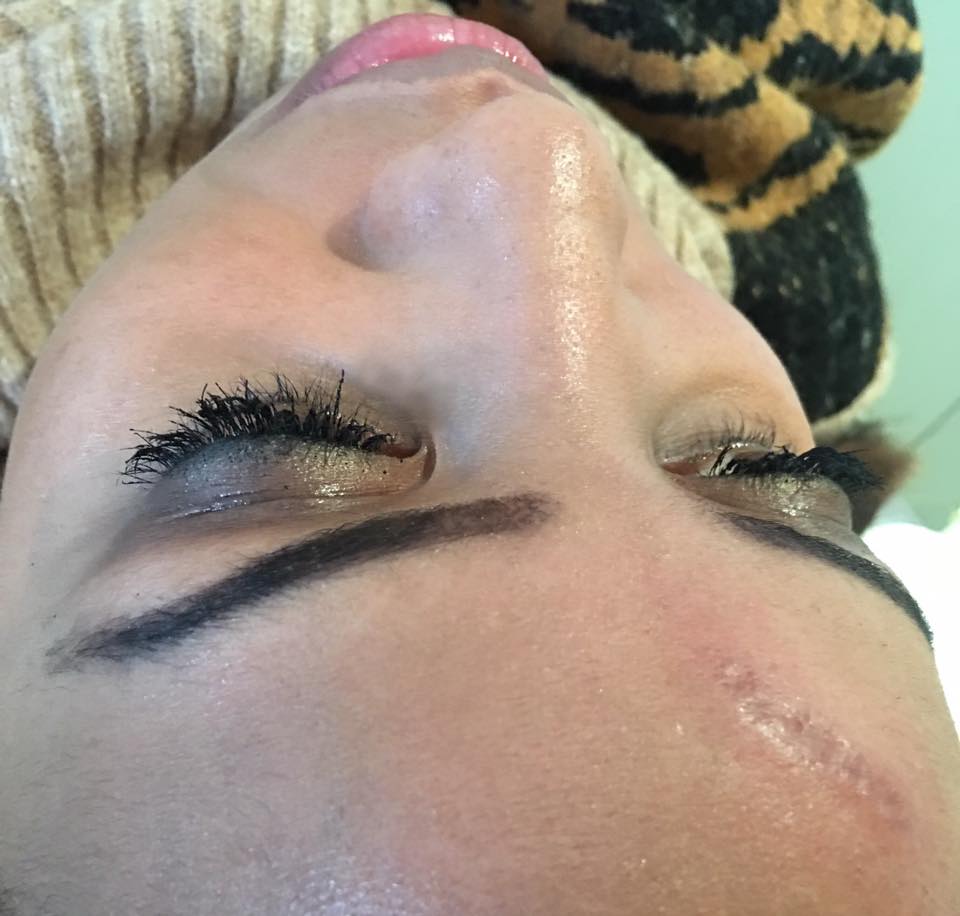What is a scar?
A scar is a natural part of the bodies healing process. Scars occur when the dermis layer of the skin is damaged. The body will create new collagen fibres however it cannot rebuild the fibres exactly as they were before the injury, therefore creating a scar. The only scar that is not treatable is the keloid scar. Below is some information on the Needling we do on the skin and how a scar can be treated.
What is skin needling?
Skin needling is also called ‘Facial Needling’ or ‘Medical Needling’ (it is not Acupuncture). The technique reduces the depth of wrinkles and fine lines on the face. It also reduces shallow depressed scars such as Chicken Pox or Acne Scars. It does not use chemicals, fillers or injections or lasers. The process creates hundreds of microscopic pin pricks to activate your bodys wound healing process. As your skin heals, it uses your own collagen to fill the valleys of wrinkles and scars naturally.
This treatment works for?
Scars, stretch marks, wrinkles, fine lines and acne scars.
What does this do?
We ‘remove’ the top layer of skin (epidermis) through skin needling to stimulate re-growth. As new skin develops, collagen and elastin is produced. This helps to smooth and tighten the skin.
How does it work?
The concept behind needling is the stimulation of collagen production in the skin. The needle abrasion breaks the skin and causes micro – trauma and micro – inflammation. Your body will respond by sending blood to the area for healing. Blood platelets then release growth factors. Fibroblasts (a cell in connective tissue which produces collagen and elastin) make and deposit new extra cellular matrix with collagen and elastin. As your skin repairs itself, new collagen builds up in the Papillary Dermis (middle layer) just below the surface. The scars plump from the bottom – up without the use of anything artificial. Repeated needling sessions gradually and continually build new collagen to fill – in the treated areas.
Is it painful?
NO, the skin is completely numbed
Applications of the Needling Technique
Wrinkle Treatment : Fine lines and wrinkles on the face can be diminished with facial needling
Indented Scars : Needling procedures can decrease the depth of pitted or depressed or shallow scars caused by acne, chicken pox, surgeries or trauma
Surgical Scars : Raised or hypertrophic (overgrown) scars can become smoother with needling treatments that flatten the elevated scar tissue, examples exclude borders of skin grafts and other hypertrophic scars
Scar Relaxation : Burns and accidents can create fibrous bands of scar tissue that often contract and limit movement. Needling can break down the contracted scar tissue to increase mobility and flexibility. The process is referred to as scar tissue relaxation or relaxation of scar tissue
What are the Benefits of Needling?
Epidermis Remains Intact : Needling does not remove or damage the outer skin later (epidermis) entirely like other resurfacing methods do. The healthy skin and blood vessels in – between the lines, wrinkles or scars is preserved. That improves healing, collagen production and long – term results
Less Pigmentation Changes : Because the epidermis is left untouched, there is less risk of permanent structural damage such as post – inflammatory hyper – pigmentation (skin darkening) or de – pigmentation (colour loss or skin whitening)
Fewer Side Effects : There are no side effects such as thinning of the skin or increased sun sensitivity because the epidermis is preserved. Skin needling uses no artificial fillers so the chance of an allergic reaction or infection is also minimized
Fast Healing and Downtime : Needling is precisely controlled and creates minimal dermal trauma. Healing is rapid with a short downtime of only a few days
On – going Treatments are Possible : Other resurfacing methods cannot be repeated indefinitely because they eventually thin the skin and create photosensitivity. But, needling can be repeated safely because the dermis becomes thicker in the treated areas instead of thinner. Also, other resurfacing methods must avoid the delicate eye area, but needling can safely treat areas around the eyes such as ‘crows feet’. It can also be performed safely on skin that previously had laser re-surfacing treatments or dermabrasion
How is the Procedure Performed?
A topical anaesthetic is applied to numb the treatment area so the procedure will not be painful. Sterile needles 1 to 2 millimetres into the skin (epidermis and top layer of the dermis) to create shallow puncture wounds. She guides the needle to make multiple insertions within the borders of a line, wrinkle or scar. The needling causes pinpoint bleeding that is minimal and stops quickly. Your bodys natural healing process is activated at that point and the rest is up to your own collagen production.
How long is the healing process?
For either wrinkle or scar treatments, swelling is minimal and surface (outer) healing occurs in a few days. Immediately after the procedure, your skin will look red in the places that were needled. Fine lines and wrinkles will look like ‘cat scratches’ or appear like they have ‘paper cuts’ inside them. Scars will be red as if a scab had just been peeled off. A light scab will form on the treated areas (it is common for light scabbing to occur with skin penetration procedures). Redness lasts 3 to 4 days then turns pink by day 4 or 5 and continues to fade. During the first 3 to 7 days, ointments should be applied to the broken skin. Procedures should be performed a minimum of 6-8 weeks apart to allow for the complete healing and collagen production. The time span in between procedures can range from 2 to 6 months.
Results and Number of Treatments
The number of required treatment sessions varies according to the depth of each wrinkle or scar. Improvement in the needled areas may be seen as soon as a few weeks after a procedure. However, inner healing of the skin continues for several months. During this time the needled skin will smooth and tighten as collagen is deposited. Fine lines or wrinkles may need 1 to 2 sessions to be plumped. Medium to deeper wrinkles and acne scars may require 4 to 6 sessions or more for optimum depth improvement. Results can be enhanced and maintained when special vitamin creams are used after intital healing.
How does Skin Needling Work
The major reason why deeper dermal needling works is because the needles fracture tiny blood vessels in the papillary dermis and the pletelets that are released induce a cascade of growth factors that are responsible for thickening of the dermis or epidermis, increased collagen and elastin that tighten and smoothen skin. Needling causes regeneration of tissue. There is no scar formation at all and it can be safely repeated as many times as necessary to get the desired result. To maximize results the power of VIT A and C should be used. Vitamin A controls growth, differentiation and maturation of skin cells and so it has a natural role in recovery after needling. If one used high doses of VIT A with VIT C and other antioxidants then one could achieve a 22 % thickening of mouse skin. If one needled the skin then one could achieve about 110 % thickening, whereas if one treated the skin with VIT A and C and needled the skin then one can achieve a 140 % increase in thickness. That’s almost a third better just from using a scientific cosmeceutic with needling.





